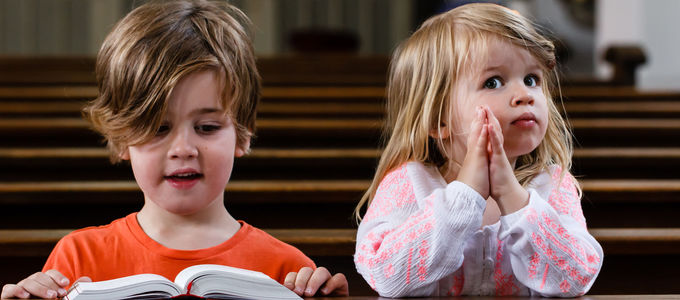“Hallowed be Your name”: about the Lord’s Prayer

There is likely no other prayer that is recited as often and with such fervour, emotion, and dignity. This suggests the close relationship to God the Creator and heavenly Father. It makes those praying it humble and great at the same time. This prayer admits us to the feeling that we are close to the Lord.
The Lord’s Prayer according to Matthew 6: 9–13 reads as follows: “Our Father in heaven, hallowed be Your name. Your kingdom come. Your will be done on earth as it is in heaven. Give us this day our daily bread. And forgive us our debts, as we forgive our debtors. And do not lead us into temptation, but deliver us from the evil one. For Yours is the kingdom and the power and the glory forever. Amen.”
All Christians pray it, everyone in his own language, often on a daily basis, either as Liturgy of the Hours or as part of the liturgy of a divine service. With this prayer Jesus gave an example of how people are to pray to God. It is the only prayer that the congregation speaks communally and with a fixed wording.
Matthew or Luke
The so-called doxology, the threefold formula of praise at the end of the prayer: “For Yours is the kingdom and the power and the glory forever,” is not recorded in the original text of the gospel of Matthew. This text dates back to the second century AD and is mentioned in the Didache (the teaching of the twelve Apostles; it is the oldest surviving church order). That is why this conclusion is not recited in all churches. Already in the second century, the Didache recommended that the Lord’s Prayer be recited three times a day—a recommendation that the Benedictine monasticism of the early Middle Ages adopted. It became part of the Liturgy of the Hours. Starting with Cyril of Jerusalem (313–386) it began to also be recited in divine service. In the Eastern Orthodox Church the prayer of the Lord is said before the breaking of the bread, whereas believers of the Catholic Church pray it afterwards. Martin Luther defined in his “German Mass” (1526) that it was to follow the sermon.
Before the celebration of Holy Communion
In the Eucharistic service of the Catholic Apostolic Church, the Lord’s Prayer was recited as a preparatory prayer for the consecration, and was thus prayed before Holy Communion. The prayer occupies the same position in the divine services of the New Apostolic Church. Before the divine service reform in 1999, the Lord’s Prayer was not recited in our midweek service, because Holy Communion was not celebrated.
3+4 = seven petitions
Formally, the prayer is divided into seven petitions. Seven symbolizes wholeness and holiness. The first three petitions following the invocation are addressed to God the Father: Your name, Your kingdom, Your will. The last four petitions concern us as human beings and our need for protection: our bread, our debts, our temptation, our deliverance.
The prayer ends with the Hebrew word “amen”. “So be it; truly. May this prayer truly be fulfilled!” Those who pronounce this amen agree with and affirm the contents of the prayer.
Photo: lagom – Fotolia




